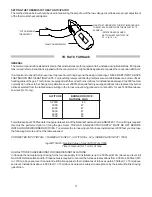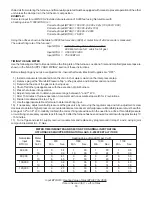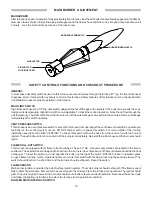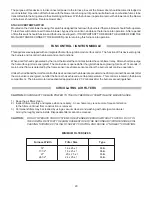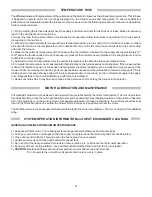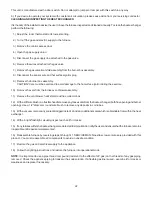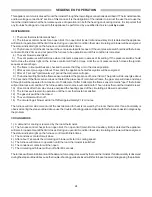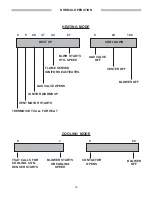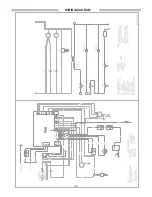
22
This unit is manufactured with a door switch. Do not attempt to jumper or tamper with this switch in any way.
8.) If you desire to operate your system with constant air circulation, please seek advice from your servicing contractor.
CLEANING AND INSPECTING THE HEAT EXCHANGER
It is the duty of the installer to advise the user to have the furnace inspected and cleaned annually. To clean the heat exchanger
perform the following:
1.) Adjust the room thermostat to its lowest setting.
2.) Turn off the gas and electric supply to the furnace.
3.) Remove the control access door.
4.) Open the gas supply union.
5.) Disconnect the gas supply line attached to the gas valve.
6.) Remove the wires attached to the gas valve.
7.) Remove the gas valve/manifold assembly from the burner box assembly.
8.) Disconnect the sensor wire and hot surface ignitor plug.
9.) Remove the burner box assembly.
CAUTION! Care must be exercised to avoid damage to the hot surface ignitor during the exercise.
10.) Remove the vent from the furnace vent blower assembly.
11.) Remove the vent blower, heat shield, and flue collector box.
12.) With a stiff wire brush on a flexible handle remove any loose scale from the heat exchanger (both flue opening and burner
opening). Use a 1/2" diameter round wire brush to remove any deposits in coil tubes.
13.) With a vacuum remove any scale dislodged in step 12 and any additional scale which is obtainable from within the heat
exchanger.
14.) With a bright flashlight, visually inspect each cell for cracks.
15.) If any failures within the heat exchanger are detected it is important to notify the user and ensure that the furnace remains
inoperable until repairs are implemented.
16.) Reassemble furnace by reversing steps 3 through 11. SERVICEMAN: No extra screws or wires are provided with this
product. You must reassemble all components to avoid an unsafe condition.
17.) Restore the gas and electrical supply to the appliance.
18.) Follow the lighting instructions and restore the furnace into operational mode.
NOTE:
It is important to use a pipe thread compound (resistant to the effects of LP gas) on the threads of any gas piping
removed. Check the appliance piping for leaks with a soap solution. If a flexible gas line is used - examine it for cracks or
weakness and replace if necessary.
Summary of Contents for GMN SERIES
Page 26: ...WIRINGDIAGRAM 26...










